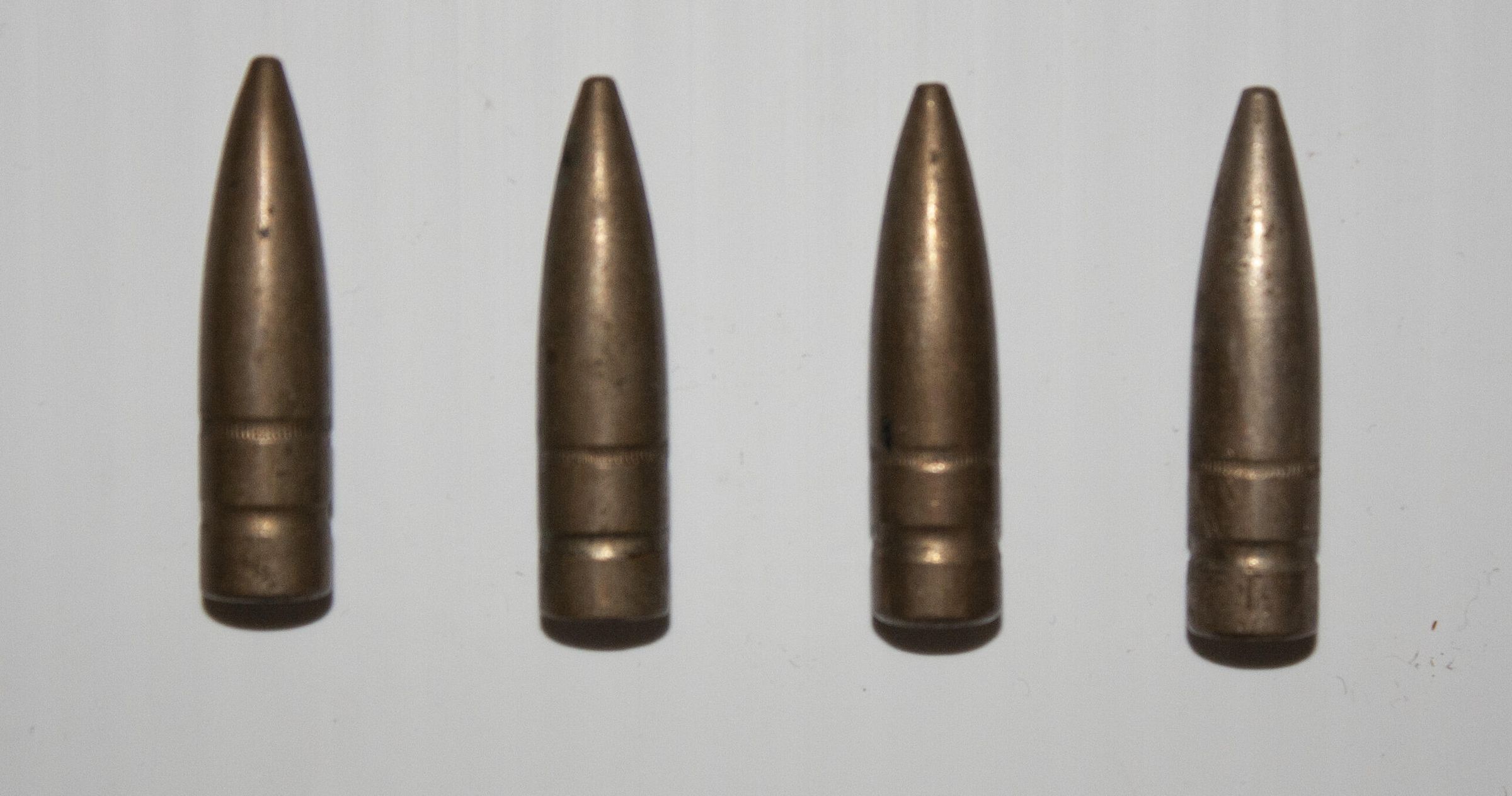Notes
The “Cartridge S.A. Ball .303 inch Mark VII” was approved in November 1910 and variations were adopted throughout the First World War.
The redesigned bullet weighed 174 grains and as introduced had a cannelure near the base into which the case neck was slit crimped. When neck coning replaced the slit crimps for bullet securement in 1944, the cannelure was moved to a new higher position. The bullet was flat based with an 8CRH ogive and a composite core, the forward part usually being aluminum and the rear part a 98/2% lead/antimony alloy. During wartime, the aluminum tip was replaced by compressed paper, fibre or ceramic.
From 1911 until about 1943 the bullet envelope was cupro-nickel but from that date gilding metal clad steel became increasingly used. Post WW2 the envelope was generally gilding-metal.
The propellant charge was about 37 grains of Cordite MDT 5-2 or 41 grains of nitrocellulose to give a muzzle velocity of 2,440 feet per second at a pressure of 19.5 tsi. A glazeboard or strawboard wad was placed above the propellant.
The revised Mark VII served through two World Wars, the Korean War and countless other smaller confrontations. It was manufactured in all the major Commonwealth countries and vast quantities were manufactured in America on contract.
